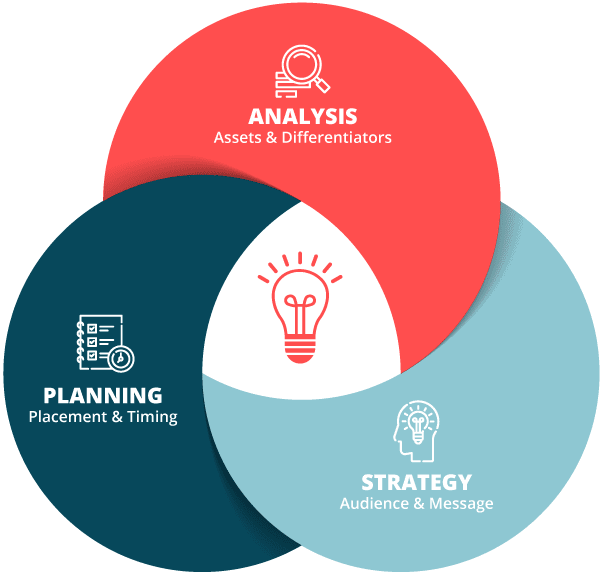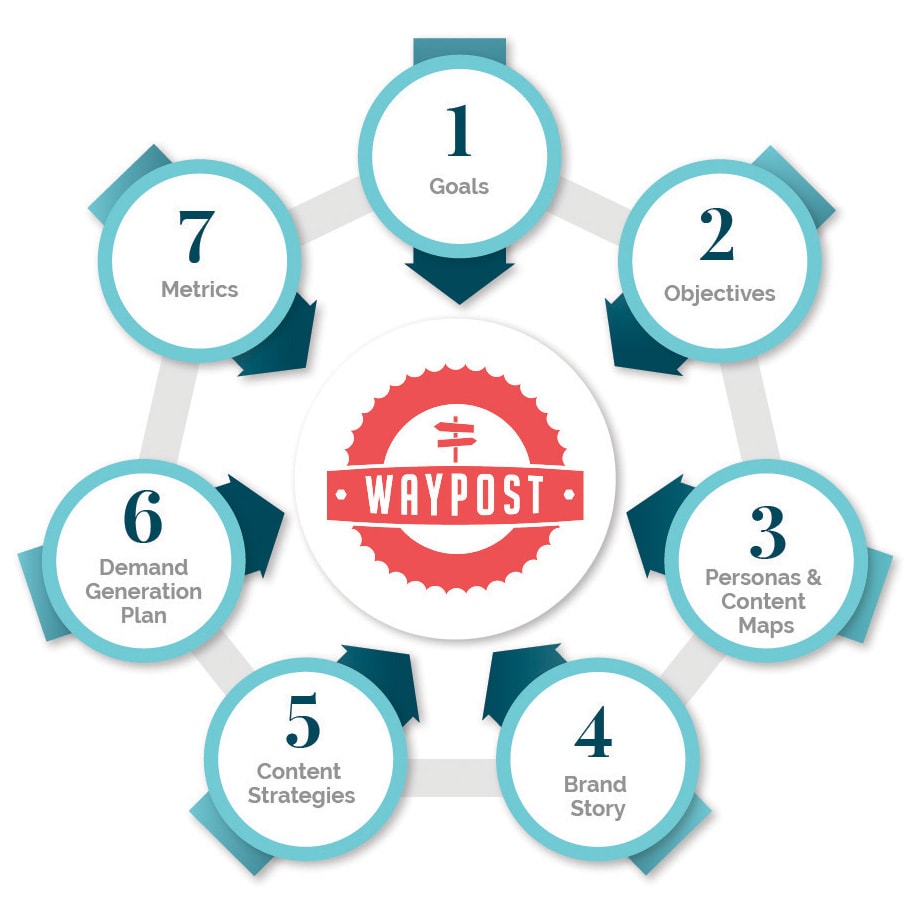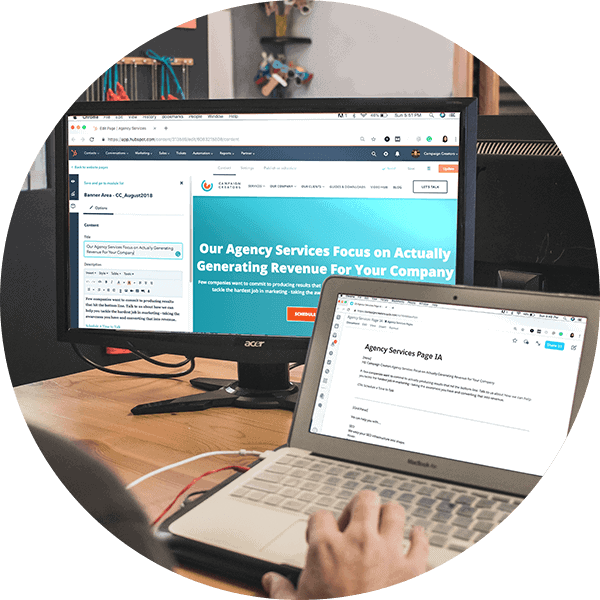If you build it, they will come?
Not without strategy first.
Marketing platforms like HubSpot made it easy for marketers to create and manage content across multiple platforms. They went to great lengths to educate their users on the wonders of Inbound Marketing. Somewhere along the way, however, people started believing that as long as they were following the formula of blogging, social media, and email marketing they would get amazing results.
In our years using HubSpot, we have helped dozens of companies achieve amazing growth goals. We’ve seen numbers that look like they came out of a marketing fairy tale, but while HubSpot has been a great help to us in that time, we don’t give the tool credit for the results. The numbers that we’ve achieved for our clients are a direct result of our strategies.
Without strategy, inbound marketing will leave you content rich and results poor, and the longer you wait to do anything about it, the harder it becomes to recover. We want to help you get back on the right path, and our strategy and consulting services are designed to do that. Our mission is to empower you to streamline your marketing efforts into effective lead generation.
Discovery-Driven Strategy Development

You can’t successfully market a product that you don’t understand. Business owners are often slow to hand over their marketing or sales strategy to an agency for that very reason. This is why our strategy development always begins with an intense process of discovery. Before we begin our first quarterly plan, we deliver a discovery document that defines and outlines the details of your existing marketing and sales processes. We also do a full study on your target markets, buyers, and buying scenarios.
With this research we can show you how to leverage or supplement the content and resources you already have. Our goal is to improve your positioning and increase your ability to meet growth goals. We can also help you bring your marketing and sales teams into alignment for the strategies we deliver.
Discovery is a process that never really ends. Before each quarterly plan we write — whether it’s the first plan or the thirty-first plan – we revisit that research and apply what we’ve learned to form an even deeper understanding of your business. It’s our goal to make each strategy better than the last one.
Let us give you a plan to meet your goals.
Delivery Method
A great strategy is goal-oriented, focused, and specific.
Any strategy you implement should start with goals and objectives. This is why many inbound marketing strategies from the past several years are starting to fail. “More traffic” is not a quality goal (though it is a good thing!) and “blogging” is not a clear objective. We want to focus on goals that have been customized to your business’s positioning, competition, and growth ambitions — goals that we can quantify and use to define success or failure.
As for objectives, we want to form specific objectives that are the best candidates to help you meet your goals. While your goals may be more general, and may even be similar from quarter to quarter, your objectives will vary widely. Each quarter we define specific content and demand generation strategies to attack your goals from new angles.
All of this is meant to evolve your brand as a whole. Each success builds a more complete picture of your market and your ideal customer.
The strategies we deliver are designed to be implemented over 90-day sprints, and they can be executed by our team or by yours. If at any time along the way you find you need extra help, we offer consulting or even full implementation to keep you on track. We also offer real-time tracking of each goal we’ve set, so you can keep an eye on your progress as you work through each sprint.
I find it very difficult to find marketing agencies that can strategically and culturally align with my clients. Most seem more effective at taking money from my clients than they are at making money for my clients. I have found Waypost to be exceptional. Waypost's team has endeavored to align with my client's team strategically and culturally, and their price point is reasonable. It's good to work with an professional agency that so effectively enhances my client's brand. I recommend them, especially if you're using HubSpot.
Quarterly Sprints

We deliver 90 days of clear, goal-driven objectives.
Our position is that you can’t operate on a single formula for long periods of time and expect continuous growth. Your core processes for marketing and sales need to adapt and evolve through constant innovation. We also believe in the importance of regularly defining and measuring success. How else do you determine whether your marketing investments are working for you?
We have adapted our strategy services over time to best serve businesses who want to grow and who expect accountability from their agency partners. Our strategies take the form of quarterly sprints, or 90-day plans. We’ve found this to be the most effective way to take big ambitious goals and break them down into small enough chunks that you can see clear progress (or course-correct if you don’t!) without losing focus.
Consulting & Training
Consulting & HubSpot Training for Your Team
One size fits all? Not with marketing. Your business is unique to you, and your existing sales and marketing team is unique as well. Our focus on any partnership is delivering effective strategies with specific growth goals set in the crosshairs. However, once that strategy is on your desk, we’re happy to help in any way we can.
If your business is equipped to take our 90-day sprint and execute it in-house, we say go for it! We’ll be waiting for you at the finish line with the results and the next 90-day plan. If you don’t have adequate resources available, we’re ready to take any or all of the work and hand it over to our own full-service team. We don’t want our partnership with any client to feel like a hostile takeover. You tell us how much help you need.
Many businesses we work with already have people in place to handle at least a part of our strategies. Some need training to get up to speed. Again, we’re happy to help in any way we can. Our marketing and sales strategists are available to coach your team on any aspect of our strategies. We want to empower in-house teams to be successful, because we think that’s best for your business.
Content Mapping
Structure your content for the future — not the past.
If you adopted a content marketing or inbound marketing strategy when they came to prominence 5 years ago, you might have a website today that’s starting to feel bloated or disorganized. Even if things still look fine to you, search engines might be interpreting your content in a way you didn’t intend. In fact, the consensus among SEOs is that there’s simply too much content on the web right now to gain traction with a traditional content creation strategy. In some scenarios, businesses are feeling pressured to hyper-specialize because it’s become impossible to compete in Google’s search results.
Regardless of your current situation, the future of search is steering us in two distinct directions:
- Structured Data & Content Organization: There’s an increasing popularity of voice search and a significant uptick in Google’s use of structured data (Schema markup). Extremely well-organized content that prioritizes technical factors is getting a big boost in search results. We see this trend continuing to the point that any content that lacks proper technical markup may never have a chance of making an impact in your search rankings. If you’re planning a redesign, or if you’re starting to lose control of your content organization, you need to have a strategy for content restructuring.
- Platform-based Content: Apart from your company website, platform-based content publishing is still a great strategy for effectively reaching your audience. However, platform-based content publishing is very difficult when compared with traditional publishing on your own website. Most platforms give priority to video content, and social platforms require regular publishing in order to keep your place in line.
It sounds weird to say, but at this point in time, a big question that your web strategy needs to answer is, “How important is my website content compared to my other platforms?” We aren’t suggesting that you ditch your website (or stop publishing new content). However, it’s clear that the way web content is indexed and served is quickly shifting. Most people aren’t ready for that change.
As content volumes increase . . . brands will have to get to grips with the fact that embracing content creation will not be a [cure-all solution].
Case Study
TPM. Inc.
Cutting total pages by 80% results in 446% increase in form submissions, 15% decrease in bounce rate, 14% increase in pages per session.














